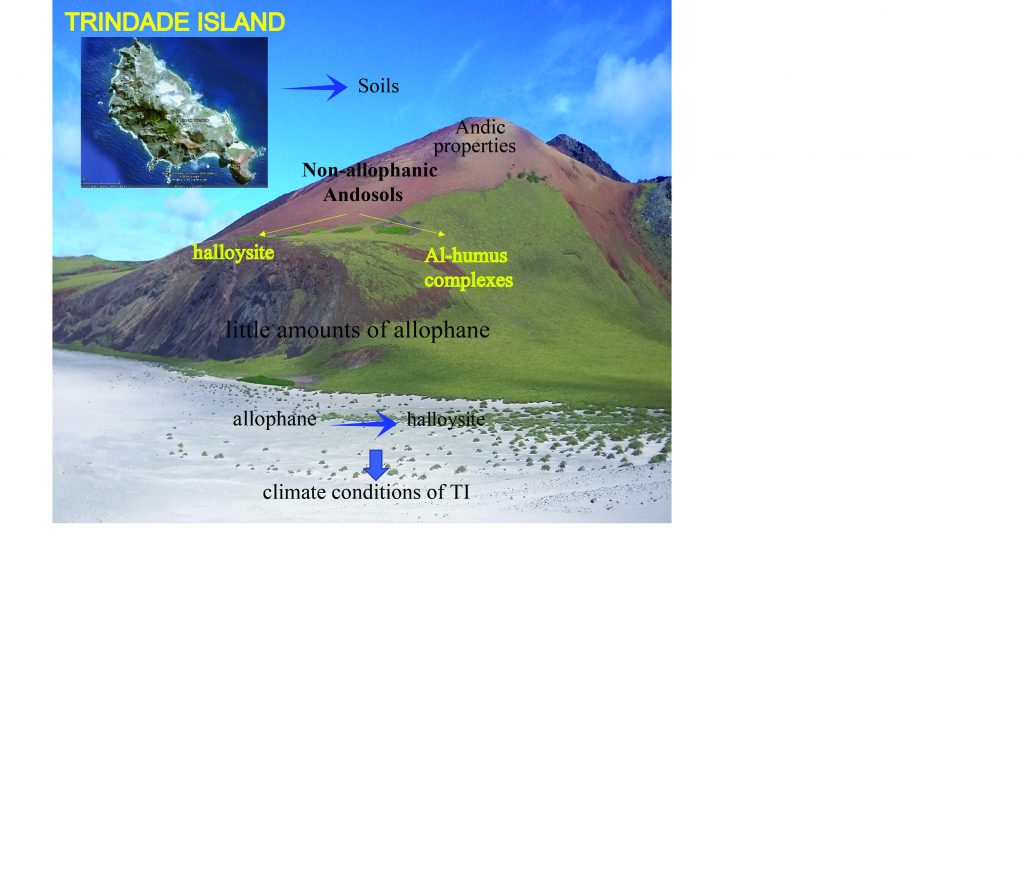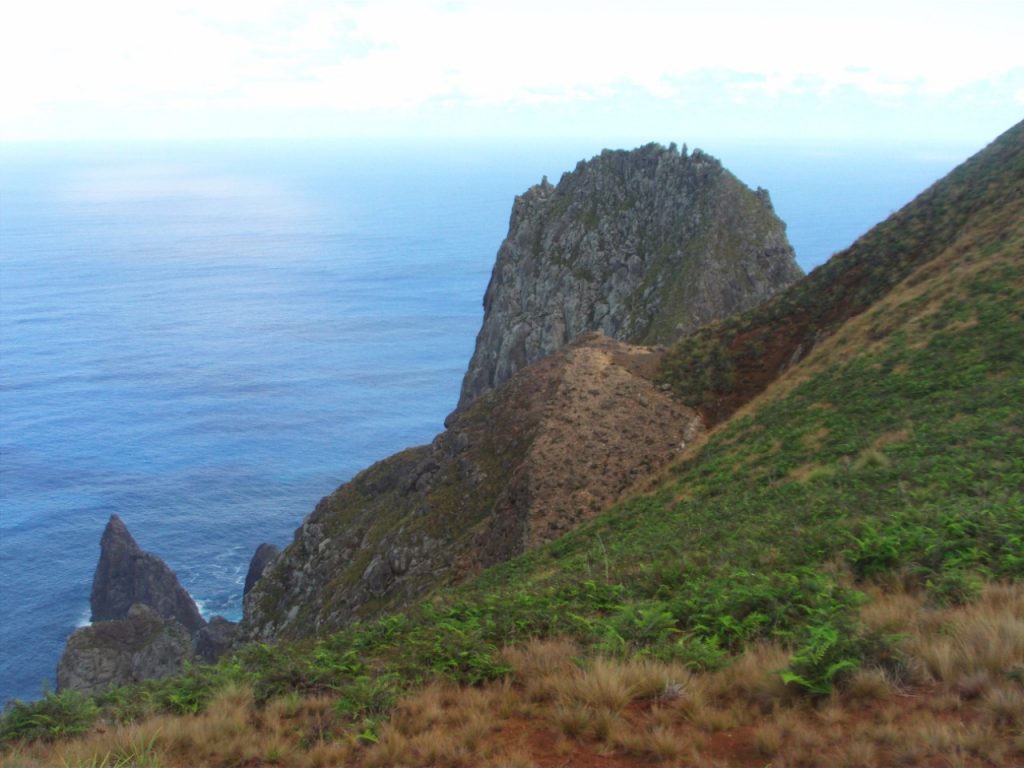Rev. Bras. Ciênc. Solo.2020;44:e0200007.
Non-allophanic Andosols of Trindade Island, south Atlantic: a new soil order in Brazil
16/Jul/2020
DOI: 10.36783/18069657rbcs20200007
Graphical Abstract

Highlights
The soils this study present properties andics and were classified as Andosols.
The little quantities of allophane is not enough to frame as allophanic Andosols.
The halloysite in clay fraction is formed by alteration of sideromelane.
ABSTRACT
The pedological studies carried out so far in Trindade Island (TI) have obtained patchy evidences of allophane, without detailed mineralogical and micromorphological studies to confirm the occurrence of Andosols in TI. Therefore, in this study, the mineralogical, micromorphological, physical and chemical characterization of four soil profiles from Vulcão do Paredão (P1) and Morro Vermelho formations (P2, P3, and P4) were carried on the latest volcanic events in Brazil from Trindade Island (TI) with the aim of to evaluate the presence of Andosols in this oceanic island. Profiles P1 and P2 are developed on pyroclastic bombs, and show, respectively, A-Bi- C and decapitated A-C horizons, whereas P3 and P4 are developed on lapillitic and bomb pyroclasts, show A-C horizons. The soil profiles have a reddish and brownish clayey matrix, are highly friable and show a plastic consistency. Their microstructures are granular, single grain and intergrain microaggregate, in which aggregates display an undifferentiated b-fabric. The mineralogical constituents of the bulk fraction are biotite, hematite, magnetite, ilmenite, pyroxene, olivine, halloysite, goethite, anatase, and rutile. The clay fraction is marked by the presence of halloysite, ferrihydrite, and little amounts of allophane. All soils presented andic properties and can be classified as non-allophanic Andosols. In addition, micromorphological features closely resemble those reported in Andosols from other volcanic islands from elsewhere. The predominance of halloysite in the clay fraction formed by alteration of sideromelane, suggests that allophane would be an intermediate phase of this rapid transformation favored by the wet climate conditions of the highest parts of TI.
365

